Funnels can help your business advertise and sell products online by generating and converting leads. To get the best results from your funnels, you need to choose the kind that suits your needs and goals.
The most widely used types of funnels include the opt-in lead generation funnel, product launch funnel, webinar funnel, free sample funnel, free consultation funnel, application funnel, and the cross-sell funnel. Each of these funnels works differently to achieve a specific goal.
In this post, we will discuss the different types of funnels, how they work, some examples, and which funnel is the best for certain situations. Keep reading for a comprehensive funnel guide!
7 Types of Funnels That Boost Conversions
Every business is unique and has its own goals. To ensure these goals are fulfilled, creating the right kind of funnel is imperative.
This section will discuss the seven most used funnels to help you choose the correct type for your needs.
1. Opt-in Lead Generation Funnel
This is the most basic and popular type of funnel. Its core goal is to generate leads for businesses.
These leads are expected to convert into paying customers by the end.
To set up a lead generation funnel for your business, you will need a lead magnet, a lead capture form, blog post(s), and an autoresponder.
How to Create a Lead Generation Funnel?
1. People first learn about your brand through social media or a Google search. So to get people to discover your brand, you need a website and social media profiles.
2. Once on your website or social media profiles, visitors will see a call to action. The call to action will then direct them to your landing page. The landing page is equipped with a lead magnet that’s intended to capture lead information.
3. At this point, you need to have an irresistible and valuable lead magnet. It should be enticing enough to get visitors to give their email addresses in exchange for it. Examples of lead magnets include free courses, ebooks, and webinars.
4. To get the lead magnet, visitors must fill out a simple form (usually just their name and email address). Once they fill out the form, visitors become new leads.
5. Now you can begin nurturing your leads using an email autoresponder. Hopefully, after successful nurturing, the leads will convert into customers.
An excellent example of a lead generation funnel is the burger battle above. They have a lead generation form at the bottom of the home page.
Their lead magnet is a newsletter that’s used to gather visitor names and email addresses.
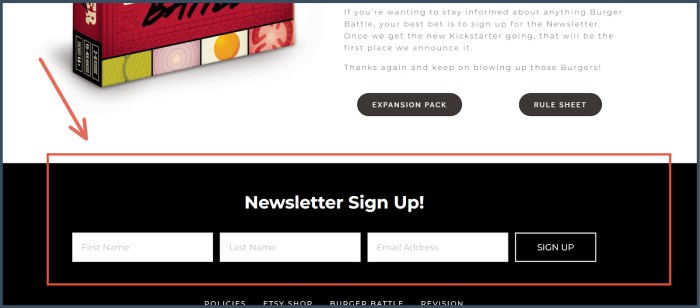
2. The Free Consultation Funnel
The free consultation funnel allows visitors to discuss your products and services with you directly. This kind of funnel helps to generate leads.
The free consultation funnel is fit for businesses with products or services that need a conversation prior to purchase.
Examples include products with several add-ons, coaching, informational products, and services such as accounting and home makeovers.
To set up a consultation funnel, you will need a free consultation offer, a registration page, and an email autoresponder.
How to Create a Free Consultation Funnel?
1. Start by offering a free consultation to attract visitors to your registration page.
2. Once a visitor signs up for a consultation, organize a free one-on-one session. You can do this through phone, Skype, Zoom, or another accessible service. After the consultation, some leads may buy immediately.
3. For those leads who are yet to commit, send them emails. In these messages, share the details and prices of your products and services. With each email, ensure you guide leads to a sales page. You can also offer paid consultation via email.
A great example of a free consultation funnel is the Healthy Mum Handbook.
This business deals in fitness resources for pregnant women and new mothers.
They stock several books, which you get access to after opting in for the free consultation.
Afterward, prospects receive emails detailing offers for the handbooks.
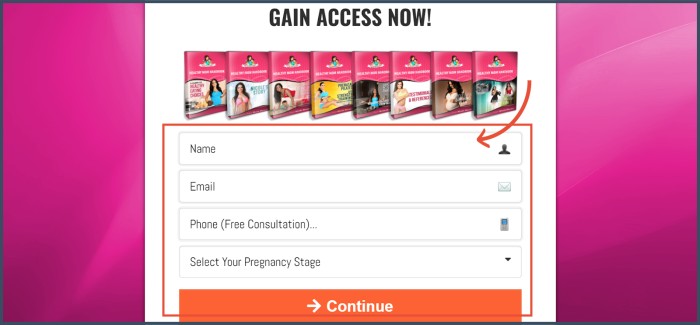
3. Limited-Time Information Product Launch Funnel
The product launch funnel is a great way to start generating leads way before you launch the actual product.
This funnel helps you build a relationship with your email list subscribers while standing out as an authority figure.
Additionally, the funnel helps build anticipation for the new product.
It also creates a sense of urgency and triggers the fear of missing out in case the product runs out of stock.
When done right, these funnels will fire up incredible demand for your product before you launch it.
This type of funnel is perfect for limited-time or limited edition products.
To set up this kind of funnel, you will need an email funnel to direct leads to the sales page, a checkout page, and a thank you page.
How to Create a Product Launch Funnel?
1. Create a registration page and attract visitors and leads to it using your new product offer. Registration gives exclusive access to watch the upcoming live product launch. At the same time, signing up means they get an exclusive pre-order.
2. After registration, send your prospects a series of emails to boost desire and create more awareness about your product. Attach a different pre-launch video to each email and a link to the sales page.
3. Send a final email to invite your registrants to the product launch. Then, after watching and participating in the live launch, redirect them to a pre-order page to buy your product.
Examples of brands that mostly use product launch funnels are Apple, Kickstarter, and Tesla.
4. The Application Funnel
Also known as the high ticket funnel, this type of funnel requires visitors to apply to buy high-end products or services from you.
This model is perfect for services costing $1000 and above (such as consultation and coaching services).
Through the application process, you can filter out leads who do not qualify, hence concentrating only on warm leads.
Besides, it saves you time and resources you would have wasted on non-qualified leads.
To set up an application funnel, you will need a reverse squeeze page, an application form, and a thank you page.
How to Create an Application Funnel?
1. To get started, first create a reverse squeeze page. Then attract visitors to the squeeze page with a case study and a video showing why potential leads should work with you.
2. After the video, direct your leads to the application form page. Have them answer a series of questions to help them pre-qualify them for your product. The application will not only qualify your leads but will also boost demand for your product.
3. As your leads await the application results, guide them to a page with further resources. After qualification, direct your leads to a payments page and finally to the thank you page.
A good example of an application funnel is the Two Comma X Club by the founder of ClickFunnels.
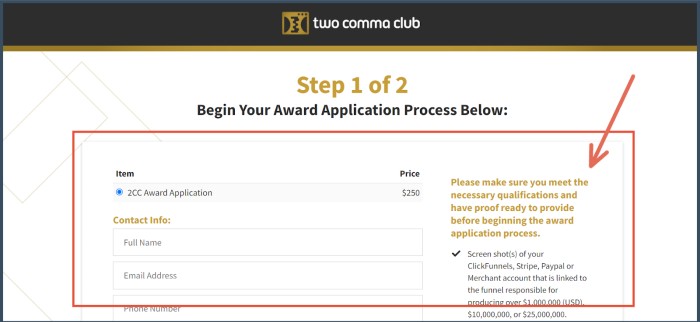
5. Webinar Funnel
The webinar funnel is designed to get people to register and attend your webinar event.
This kind of funnel is ideal for service-related businesses in areas like coaching, consultation, and online training courses.
Webinar funnels help you connect with your audience and demonstrate how your brand can help them.
The best part is that your sales force can reach anyone, anywhere in the world.
And while the broadcast is live, you can record it and sell it over and over again if it is a paid webinar.
You could also host a free webinar and sell products and services for up to $2000.
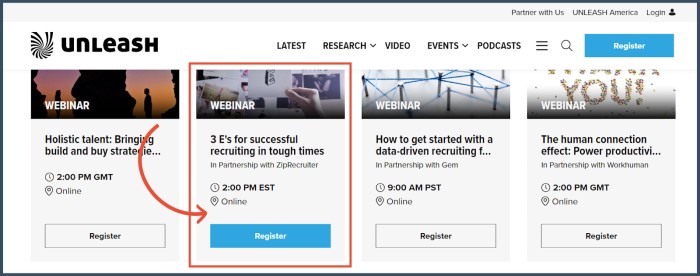
How the Webinar Funnel Works?
Visitors are initially attracted by a free webinar on your site.
Upon clicking register, they are redirected to a registration page where they sign up by providing their details.
Once they fill in their details, visitors are guided to a confirmation page with the time and date of the event.
While they wait for the date of the webinar, registrants receive automated emails reminding them of the upcoming webinar.
The reminders also help elicit interest and excitement in leads, increasing their chances of turning up.
After the free webinar, leads are offered upsells. These could be paid webinars or related premium products.
If the leads want to buy the upsell, they are taken to a payment page and a thank you page later on.
The major perk of the webinar funnel is that there is an unlimited chance to win leads.
If, for instance, leads to drop out during or after the event, you can win them back through a series of emails.
An example of a webinar funnel is from Unleash. The homepage displays several webinars from which visitors can pick webinars that pique their interest.
Upon clicking the register button, visitors are directed to a registration page where they can reserve their spot.
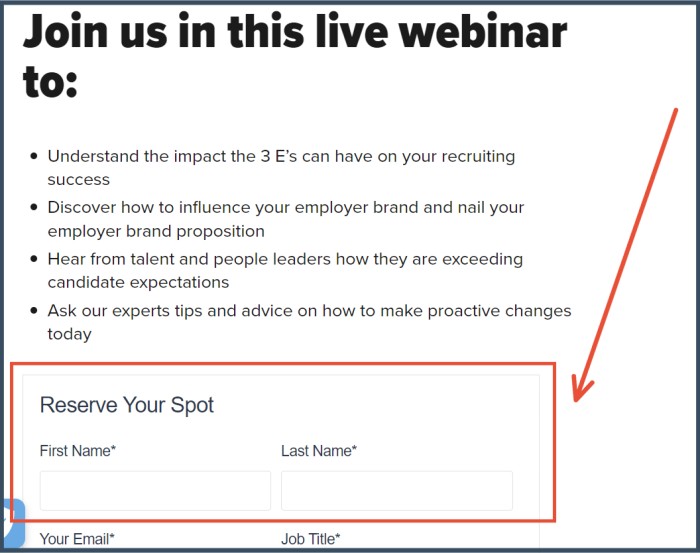
6. The Free Sample Funnel
The free sample funnel offers visitors a chance to try your product or service for the first time without paying for it.
This is a win-win situation for both you and your leads. Leads get to use your products for free, and you get their contact information.
Due to this exchange, any business can use the free sample funnel even if they do not have free samples.
Since lead magnets also require visitors to share their personal information, you can use them in place of free samples.
Free samples are offered with the anticipation that leads will love the sample enough to come back for the paid version.
You will need a free sample/lead magnet and an email autoresponder to set up this kind of funnel.
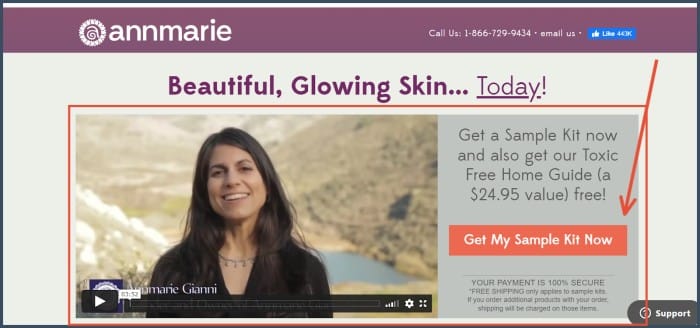
How the Free Sample Funnel Works ?
Prospects have to opt-in by providing their email address to receive the free sample.
Once they get the free sample, engage and nurture them through a series of emails. Then, keep following up for as long as the free sample lasts.
Once the samples are finished, send the prospects emails offering them discounts if they buy after testing your product.
If they’re interested in the discount, prospects will be guided to a payments page and then to a thank you page.
An example of a free sample funnel is the one by Annmarie Gianni skincare.
She offers an informational video that explains the free sample kit. In addition to the kit, prospects get a $10 coupon and free shipping anywhere.
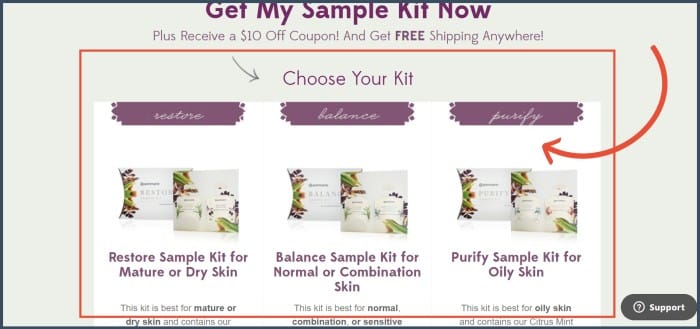
7. The Cross-Sell Funnel
The cross-sell funnel offers customers a product related to a product they are already interested in.
To make the cross-sell offer relevant, the suggested product should be closely related or supplemental to the original item.
Any business can use this funnel provided they have related products or services.
Customers who like the suggested products can either add them to their cart or return another day to purchase the cross-sell products.
How the Cross-Sell Funnel Works?
The cross-sell funnel is a one-of-a-kind funnel, making it difficult to pinpoint the starting point. This is because the cross-sell doesn’t always start the funnel.
For instance, cross-selling to a returning customer would be restarting the funnel or retaining a customer.
On the other hand, if you cross-sell to a customer immediately after buying a related product, the cross-sell will happen in the interest or desire stage of the funnel.
A good example of a cross-sell funnel is the one from Amazon above. Once customers view a product, they get suggestions for similar products.
If they add the product to a cart, they get suggestions of additional products that can be used together with the product in the cart.
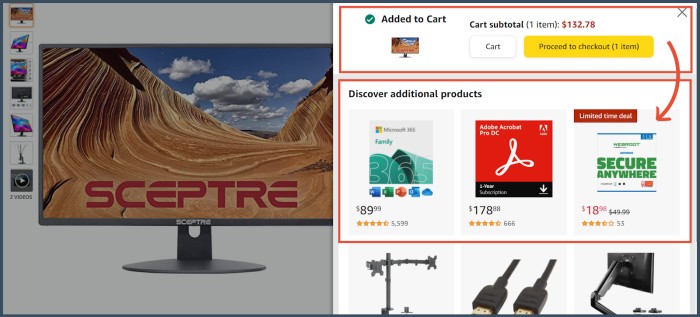
How to Select the Type of Funnel to Use?
Since there are several funnels, choosing a suitable one for your business can be tricky.
Luckily, selecting the ideal funnel for your brand doesn’t have to be complicated. Here are some tips to help you choose a funnel type:
- Identify why you need a sales funnel and state the objectives you intend to achieve. For example, some objectives may be promoting a webinar, generating leads, increasing sales, or launching a new product.
- Go through the above funnel types and see which one resonates with your goals.
- Conduct further research by checking what successful competitors are doing to achieve their goals. Find out the type of sales funnels they use as well.
With the combined insights from this post and from your competitors, you’ll be able to establish the funnel you need.
If you have multiple goals, feel free to use more than one funnel type. Besides, using multiple funnels will boost your chances of converting a lead.
That is, if one funnel fails to convert a lead, you still stand a chance of convincing them in the next funnel.
Final Thoughts
Understanding the various types of funnels out there is of utmost importance. It will help you choose a funnel that aligns with your goals.
Hence, you will avoid investing in the wrong type of funnel and will be able to meet your objectives.
Knowing why you need a funnel and checking what your competitors are using will help you choose the right strategy.
That said, you can now get started with funnel building using the above funnel types and then improve your tactics from there.
